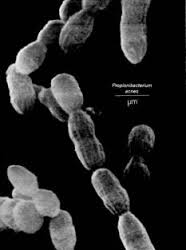Team:Montgomery Cougars NJUSA/Project
From 2014hs.igem.org
Contents |
Project
Background
The Role of P. Acnes in Acne Vulgaris
The bacteria Propionibacterium acnes is responsible for the condition called Acne Vulgaris, more commonly known as acne. Although P. Acnes is not an issue for most people, there are certain virulent strains that exacerbate acne inflammation. The bacteria thrives in the presence of lipids, specifically sebum, which serves as the primary source of the bacteria's energy and sustenance. An increase of sebum production attracts bacteria into hair follicles, where the bacteria can multiply and colonize, resulting in an inflammatory reaction of cysts and pustules, which can lead to acne scars.
Description
- For the 2014 Competition season, Montgomery_Cougars_NJUSA aims to create a better solution for acne reduction. Acne is a problem that affects nearly 80% of American adolescents. Unfortunately, this widespread problem does not have a concrete solution. Proactiv, a leading acne medication company, uses salicylic acid to burn off skin and bacteria alike from the patient’s face. This method is moderately painful and is not always 100% effective. So, to combat this widespread ailment, Montgomery iGEM has decided to take a different approach.
- In an effort to create a less invasive treatment we decided to produce an enzyme to break down the sebum on human skin, thereby reducing the bacteria's source of energy and ability to colonize. Because sebum is made of of triglyceride oils, wax esters, squalene, and metabolites of fat-producing cells, we sought a group of enzymes that would break down these components. Through our research, we have concluded that there is a positive correlation between patients with acne and presence of triglycerides and wax esters. Our mechanism ultimately focused on targeting these substances. In reducing these substances, we effectively deplete the food that the P. acne bacteria needs to thrive and elicit the inflammatory response we perceive to be acne.
Design
Enzyme/Gene Selection
See The Process of Selecting the Gene for more information.
We ultimately decided on the enzyme dehydrogenase.
Our Project
- Project Overview
- Pathogenesis of Acne
- Selecting the Gene
- Registry Parts
- Mathematical Model
- Error Analysis
 "
"
